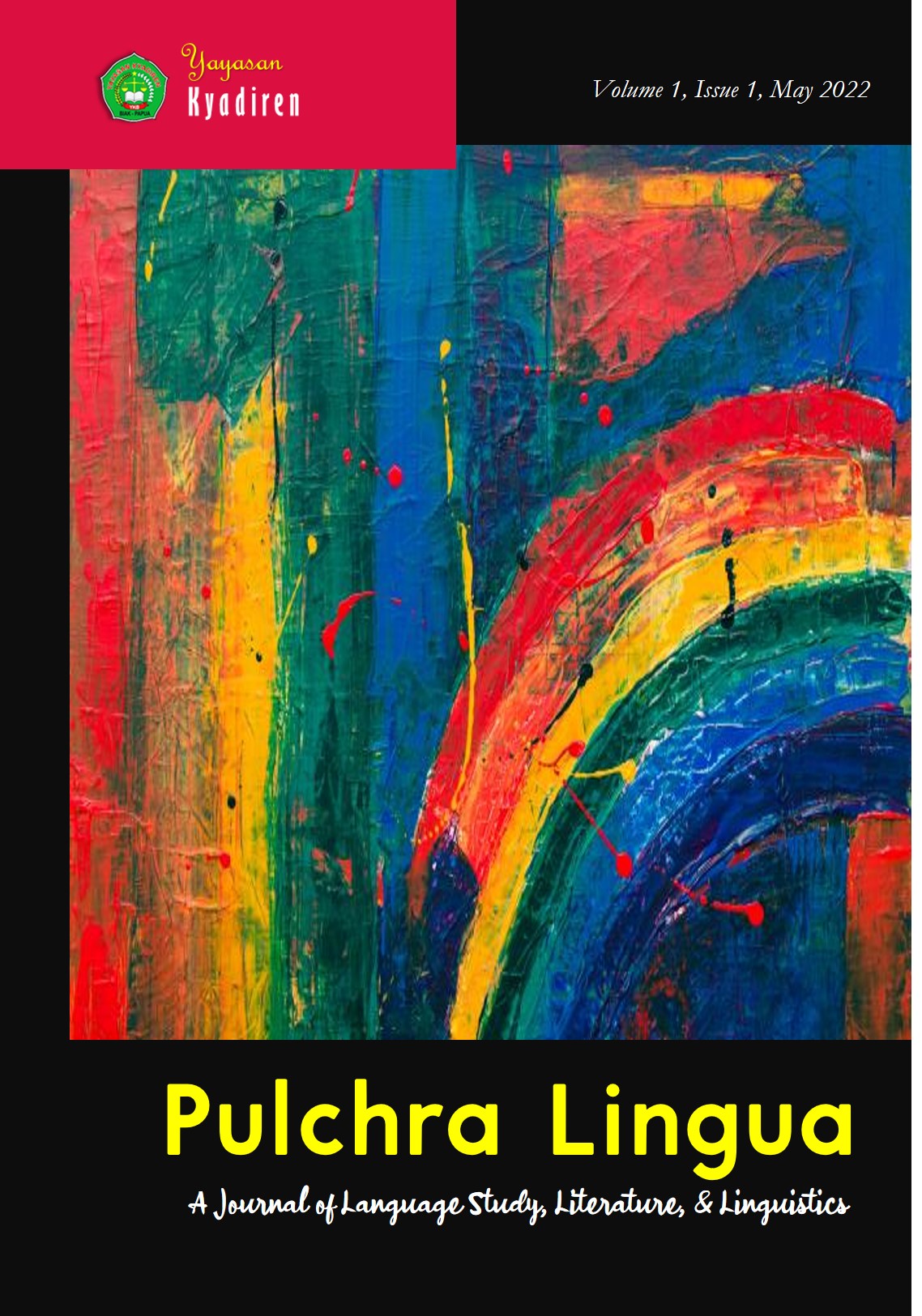Critical Discourse Analysis on Camila Cabello’s Song Lyric: “Havana”
DOI:
https://doi.org/10.58989/plj.v1i1.1Kata Kunci:
Critical Discourse Analysis, Song’s Lyric, Camila CabelloAbstrak
This research aimed to find out the text analysis, social cognition, and context in Camila Cabello's song lyrics of Havana. This research belonged to descriptive qualitative. It was intended to describe precisely a phenomenon that was analysed. In conducting the research, the researcher operated the padan-intralingual and padan-ekstralingual methods. The discussion showed that Things observed in text analysis are: 1. macrostructure: theme, 2. superstructure: discourse structure, 3. microstructure: sentence form and meaning. This song's general theme tells about the dilemma of a girl who had to choose between her loved one or her hometown, Havana. Amid this dilemma, she was compelled to decide her hometown over the person she loved. Then about social cognition, the songwriter composed the Havana song based on her life experience. Havana, her hometown, was assembled as the general theme of this song. In this song, she appears incapable of leaving Havana even though she has already discovered her love from East Atlanta, Jeffery. Additionally, this song has become popular worldwide because of its uniqueness. Camila intended to show everyone that she loved her hometown, although there was a man that captivated her heart.
Referensi
Journal
Catt, I. E. (2011). The Signifying World between Ineffability and Intelligibility: Body as Sign in Communicology. The Review of Communication, 11(2), 122–144. https://doi.org/10.1080/15358593.2011.552115
Diessel, H. (2020). A Dynamic Network Approach to the Study of Syntax. Front. Psychol, 11(604853). https://doi.org/10.3389/fpsyg.2020.604853
Fairclough, N., & Wodak, R. (1997). Critical Discourse Analysis. In Discourse Studies: A Multidisciplinary Introduction (pp. 258–284). Sage.
Kurosh, S., & Kuhi, D. (2020). Discourse analysis in translation studies: by Jeremy Munday and Meifang Zhang, Amsterdam/Philadelphia, John Benjamins Publishing Company, 2017, 151 pp., $30, ISBN 9789027242822. Critical Discourse Studies, 17(1), 130–132. https://doi.org/10.1080/17405904.2019.1661859
Lanigan, R. L. (2015). Philosophy of Communicology: “Discourse Which Expresses Itself Is Communication.” The Riview of Communication, 15(4), 349–358. https://doi.org/10.1080/15358593.2015.1102408
Mogashoa, T. (2014). Understanding Critical Discourse Analysis in Qualitative Research. International Journal of Humanities Social Sciences and Education, 1(7), 104–113. https://www.arcjournals.org/international-journal-of-humanities-social-sciences-and-education/volume-1-issue-7
Nettl, B. (2000). An ethnomusicologist contemplates universals in musical sound and musical culture. In S. Brown, B. Merker, & C. Wallin (Eds.), The Origins of Music. The MIT Press. https://doi.org/10.7551/mitpress/5190.001.0001
Permatajaya, K. D. (2015). A Semantic Study of Song Lyrics of Foster The People. Humanis: Journal of Arts and Humanities, 13(2), 1–8. https://ojs.unud.ac.id/index.php/sastra/article/view/17215/0
van Dijk, T. A. (2006). Discourse, context and cognition. Discourse Studies, 8(1), Discourse Stud. https://doi.org/10.1177/1461445606059565
Vereshchahina-Biliavska, O. Y., Cherkashyna, O. V., Moskvichova, Y. O., Yakymchuk, O. M., & Lys, O. V. (2021). Anthropological View on the History of Musical Art. Linguistics and Culture Review, 5(2), 108–120.
Zinn, J. O., & Müller, M. (2022). Understanding discourse and language of risk. Journal of Risk Research, 25(3), 271–284. https://doi.org/10.1080/13669877.2021.2020883
Books
Cook, G. (1989). Discourse in language teaching: A scheme for teacher education. Oxford University Press.
Hornby, A. S. (1995). Oxford Advanced Learner’s Dictionary (5th ed.). Oxford University Press España.
Kridalaksana, H. (2008). Kamus Linguistik (4th ed.). Gramedia Pustaka Utama.
Mahsun, M. (2007). Metode penelitian bahasa : tahapan strategi, metode, dan tekniknya (3rd ed.).
Tarigan, H. G. (1987). Pengajaran Wacana. Angkasa.
van Dijk, T. A. (2014). Discourse and Knowledge: A Sociocognitive Approach. Cambridge University Press.
Unduhan
Diterbitkan
Cara Mengutip
Terbitan
Bagian
Lisensi
Hak Cipta (c) 2022 Firma Pradesta Amanah

Artikel ini berlisensiCreative Commons Attribution-ShareAlike 4.0 International License.






